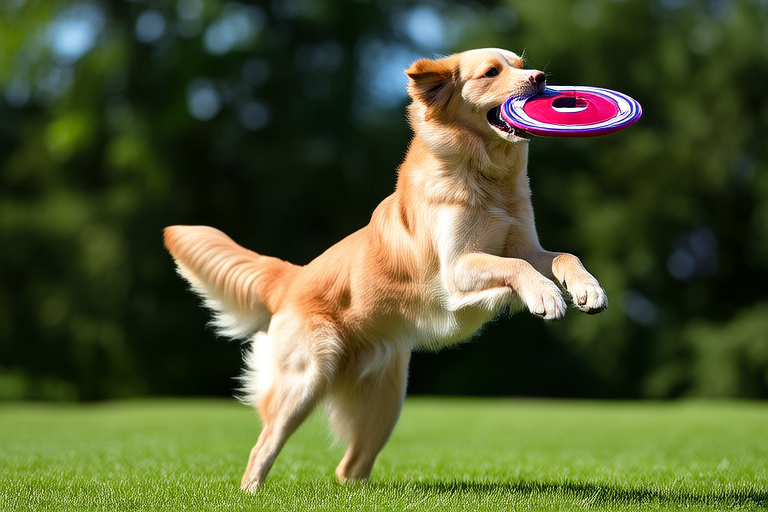The Ultimate Guide To Keeping Your Labrador Active And Fit
Welcome to the ultimate guide to keeping your Labrador active and fit! Labradors are known for their high energy levels and playful nature, making it crucial to provide them with adequate physical and mental stimulation. This comprehensive guide will cover everything you need to know about ensuring your Labrador remains healthy and happy.
Understanding Labrador Energy Levels
Labradors are a breed that thrives on activity and social interaction. They were originally bred as working dogs, which means they have a lot of energy to burn. On average, Labradors require around 60 to 90 minutes of exercise per day. However, individual energy levels can vary based on age, genetics, and overall health. Puppies tend to have boundless energy, while older Labradors may slow down. Understanding your Labrador’s unique energy profile is key to meeting their needs effectively.
Essential Daily Exercise Routines
Regular exercise is vital for maintaining a Labrador’s physical and mental well-being. A balanced routine includes both structured activities and free play. Early morning walks or runs are excellent for burning off excess energy, setting a positive tone for the day. Evening walks can also be beneficial, especially if your Labrador has been cooped up all day. Swimming is another great option for Labradors, as they love water and it provides a low-impact workout. Incorporating different types of exercises keeps things interesting and helps prevent boredom.
Interactive Play Ideas
To keep your Labrador engaged and entertained, incorporate various interactive play sessions into their routine. Fetch is a classic game that never gets old for Labradors. Use a variety of balls or frisbees to keep the game fresh. Puzzle toys that dispense treats can challenge their minds while rewarding them for problem-solving. Tug-of-war is another stimulating game that builds strength and reinforces bonding. Remember to always supervise these activities to ensure safety and proper behavior.
Nutritional Needs For Maintaining Fitness
A balanced diet is crucial for maintaining a Labrador’s fitness. High-quality dog food rich in proteins and fats supports muscle development and overall health. Avoid overfeeding, as Labradors are prone to obesity. Portion control and regular feeding schedules help maintain a healthy weight. Consult with your veterinarian to determine the right amount of food based on your Labrador’s age, size, and activity level. Fresh water should always be available to keep them hydrated, especially after intense exercise.
Common Health Issues Related To Inactivity
Inactive Labradors are at risk for several health issues. Obesity can lead to joint problems, diabetes, and heart disease. Lack of exercise can also cause behavioral issues such as destructiveness and excessive barking. Regular activity helps maintain a healthy weight, strengthens muscles and bones, and improves cardiovascular health. Mental stimulation through exercise reduces stress and anxiety, promoting a happier and more balanced temperament.
Training Tips To Keep Them Mentally Stimulated
Training is not just about teaching commands; it’s also an opportunity to engage your Labrador mentally. Start with basic obedience training to build a strong foundation. Once they master the basics, introduce more advanced tricks and commands. Agility courses, where Labradors navigate through tunnels, jumps, and other obstacles, offer both physical and mental challenges. Training sessions should be short but frequent to maintain interest and avoid frustration. Positive reinforcement techniques, like treats and praise, encourage good behavior and make learning enjoyable.
Advice On Choosing Appropriate Toys And Equipment
Selecting the right toys and equipment is essential for keeping your Labrador active and entertained. Look for durable chew toys that can withstand vigorous chewing. Interactive toys that dispense treats stimulate their minds and provide rewards. Balls, frisbees, and tug ropes are ideal for fetch games. Consider investing in a sturdy dog bed for rest periods between activities. A well-fitted collar or harness is necessary for walking and running. Ensure all toys and equipment are safe and appropriate for your Labrador’s size and age.
By following this comprehensive guide, you’ll be well-equipped to keep your Labrador active and fit. Regular exercise, proper nutrition, mental stimulation, and suitable toys and equipment contribute to a healthier and happier life for your beloved pet. Remember, each Labrador is unique, so tailor your approach to suit their individual needs and preferences. With consistent effort and attention, you’ll enjoy many years of companionship with a lively and healthy Labrador.
